Country / Surf / Rockabilly Zone
Howdy cowboys, surfers and rockabilly cats ! Believe it or not, even for clean sounds or tubeamp-breakup overdrive a good booster can do magic to your tone, so read on .....
BSM Tone Chart
For the classical clean country and "Shadows" sound at almost unity gain, the BSM RMG is the perfect pedal. You can also use it as a kind of active tone control and it can add a lot of twang and spank even to the weakest axe. Highly recommended for guitars with a weak treble high-end. Also the best choice for jazz, swing, beebop and acoustic guitars.
If you need a tad more dirt with a fantastic sounding bass, the BSM VX-C Classic is for you. This pedal is recommended for guitars with a weak bottom end. From a nutshell it can do the same as the RMG, but with a tad more gain and a much bassier bottom end.
If you are looking for shining and polished high-gain sounds, get the BSM VX-T to taylor your needs. This pedal is also the right choice for modern Country Rock and anything in between. It is more focused on the mid-range frequencies and will cut through every mix.
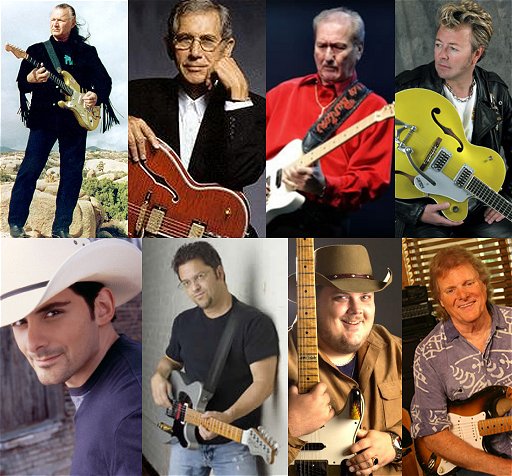
One of the keys to get this typical tone, is the use of a compressor as well as a delay. What we want, is a thick, clean and twangy tone with a percussive attack and bright shining, but not penetrating highs. So read on, here's a lesson coming .....
How to use a Delay for Country and Rockabilly music
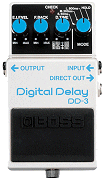
A delay stompbox is one of the essential parts for a good Country and Rockabilly tone. You can use any delay from any company of your choice, it doesn't matter if you decide on a classic stompbox, multi effect or 19" rack device. It's a matter of choice if you prefer an analog or digital delay, simply try them out and let your ears decide ! An analog dealy produces a warmer and thicker sound but with a shorter delay time - the range of a digital delay is much more extended but therefore more difficult to dial in short delay time exactly and some say that they sound colder and more "sterile" compared to the analog devices. Please notice, that some companies use different terms to describe a delay's parameters. We want to use the terms "Delay Time" (aka "Repeat Rate"), "Feedback" (aka "Intensity") and Level (aka "Echo"). If you use more than one effect, make sure to connect the delay near the end of your effect chain, right after the Chorus if you use one.
Standard Delay
For a good standard Delay sound you can leave always on, set the Delay Time around 175ms, the Feedback to 0 for one repeat and the Level to about 1/3 of your original signal. This is the kind of sound you can hear on a lot of records.
Rockabilly Slapback
For this ultracool "old-school" Rockabilly slapback Delay you can hear on all the old SUN Record recordings, set the Delay Time between 125 and 150ms, depending on the speed of the song. Set the Feedback to 0 for only one repeat and the Level between 1/2 and 3/4 of the original signal.
Fattening up your tone
You can also use your Delay to get a very fat tone out of your guitar, a trick that a lot of the Nashville session aces use on countless records. For this, set the Delay time between 35 and 42ms. If it's difficult for you to dial in this time, a good proximation is to set the Delay Time that the doubled tone is almost not audible. Set the Level control to 1/1 of your original signal and enjoy the fatness !
Fast tempo Delay for playing 1/8 notes
This is a cool sounding trick that Albert Lee uses a lot. Set your Dealy Time between 275 and 325ms, depending on the tempo of the song. Set the Feedback to 0 for only one repeat and the Level to 1/1 of your original signal. Play fast tempo 1/8 notes and take care to play accurate and always in time!
How to use a Compressor for Country and Rockabilly music
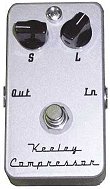
A compressor is another important stompbox for this style of music. You can use any compressor from any company of your choice, it doesn't matter if you decide on a classic stompbox, multi effect or 19" rack device. A lot of country players use the blue Boss compressors (CS-2 or the newer CS-3), the MXR Dynacomp, a Dan Armstrong "Orange Squeezer" or the top of the line Keeley compressor. Especially the Keeley compressor is said to be one of the best compressors ever ! It's a matter of choice if you prefer an analog or digital compressor, an analog compressor produces a warmer and thicker sound while a digital one sounds colder, harder and more "sterile" compared to the analog devices. A compressor for country style should be placed right at the beginning of your fx-chain, not into the fx-loop of your amp ! For clean tones, you can use a compressor in two different ways: to squash the single notes or to add sustain.
Squashing the notes
Squashing the single notes is very important to pronounce the percussive attack of the tone eg. for chicken pickin' style. With this setting, the notes seem to jump out of your amp, directly into your face. If your compressor offers an "Attack" (aka "Release") control, it's important to completely close it to get the fastest attack time possible. Now you can play with the two other controls "Sustain" and "Level" to dial in the amount of squashing you like. A good starting point for this is to set the "Level" at 3:00 h and the "Sustain" at around 10:00 h. The results will be different with any setup, so use this setting and experiment from there.
Adding sustain
Adding sustain is also a helpful feature for clean tones, eg. for classical pedalsteel bendings. This will help you to keep your tone and your sustain alive while playing and holding long notes. But don't overdo it with the compressor, at a certain effect level it will start to also add hiss and noise to your tone, as well as some "background pumping", so here less can be more. Here the "Attack" control is very important, a good starting point for adding sustain is to set the "Sustain" to 01:00 h and the "Level" at around 10:00 h. Now use the "Attack" control (if you have one) and open it step by step to dial in the sustain effect you want.
This is the classic choice of all country players, and also a lot of rockabilly guys can't live without a Telecaster. Nothing has the spank and the twang of a good ole Tellie ! A perfect combination for country playing, is an ash or basswood body with an one-piece maple neck. For a vintage tone, it's important to use the old "ashtray" bridge with three brass saddles, today you can also buy compensated saddles to get rid of the typical intonation problems. For even more twang, you can also use steel saddles, like Fender did on the late 60's Telecasters. If you are doing a lot of steelguitar bendings, it can be helpful to choose a neck with a wider radius than the typical vintage 7.25", this will help you a lot to do difficult bendings.
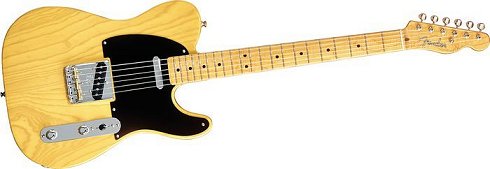
The Stratocaster without any doubt is THE surf guitar and also the choice of many country players. Especially on the bridge pickup you can get very twangy tones, that will cut through every mix. For a classic country tone, an ash body with an one-piece maple neck is the best choice. Take care that you use a cold-rolled steel inertia tremolo block, not a diecast one. It's also recommended to use the vintage shaped steel saddles on the bridge and a bone nut. A socalled "baseplate" under the bridge pickup can help you to make it sound more like a Telecaster bridge pickup sound, very cool ! With the very easy to perform socalled "7 Sound Modification" you can also use the bridge and neck pickup of a Strat together, just like you can do on a Telecaster.
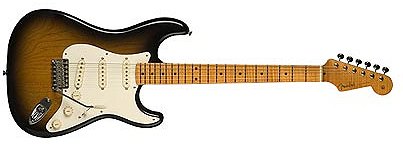
The big, hollow Gretsch guitars are the classical rockabilly axes with a big, fat twangy tone. Also Chet Atkins used this guitars for his signature sound. The Gretsch Filtertron pickups have a very big and clean tone, a good substitute are the T.V. Jones replacement pickups, the favorite choice of Mr. Brian Setzer himself. Gretsch guitars are a perfect mate for a good and clean sounding tube amp, with the volume turned up high, it's easy to get the desired "tube amp breakup" sound, riding the amp on the edge of distortion. A fantastic sounding stompbox for this sound is the Danelectro "Wasabi Rock-a-bye" delay/overdrive.
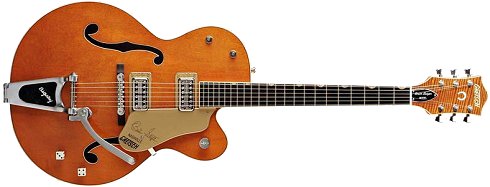
For this style of music you can use almost any amp with a good clean basic tone. Great sounding tube amps for this music are the Fender 4x10" Bassman, 2x12" Twin Reverb, 2x12" Pro Reverb or the 1x12" Deluxe Reverb. Especially the Fender Silverface amps from the 70's are a good choice ! Tube/Transistor hybrid amps like the famous Music Man amps are also a great choice and preferred by many artists, they are real workhorses and will stay clean until the very end. Also pure transistor amps like the Roland "Jazz Chorus" are worth a try and a good choice for this styles of music. For a good clean basic tone, set the controls as follows: plug into the "Clean Channel" of your amp (if you have, use the "Bright" input) and set the Bass to 5, the Mids (if you have) to 5, the Treble to 7 and the Reverb around 5. For more infos about the controls of an amp, please read the Magical 6 article.
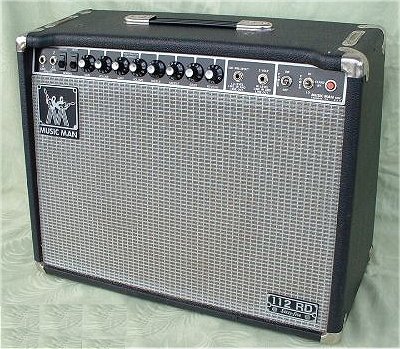
For a good and clean tone, it's important to use the right pick (aka "plec"). A medium celluloid pick of any shape in tortoise (aka "shell") color is perfect for this styles of music. This is a wide field to experiment, because different materials and colors (!!!) will result in different tones. So this is a kind of fine tuning to your tone, picks are cheap so you can buy different types and experiment with them. Try to use the hybrid picking technique for a meatier tone, especially on the top strings by using a pick and the fingers at the same time. Players who use hybrid picking generally hold the pick in the traditional grip, i.e., between the forefinger and thumb. Since this only involves the use of two fingers, it leaves three fingers of the picking hand free, which is what allows for hybrid picking.

